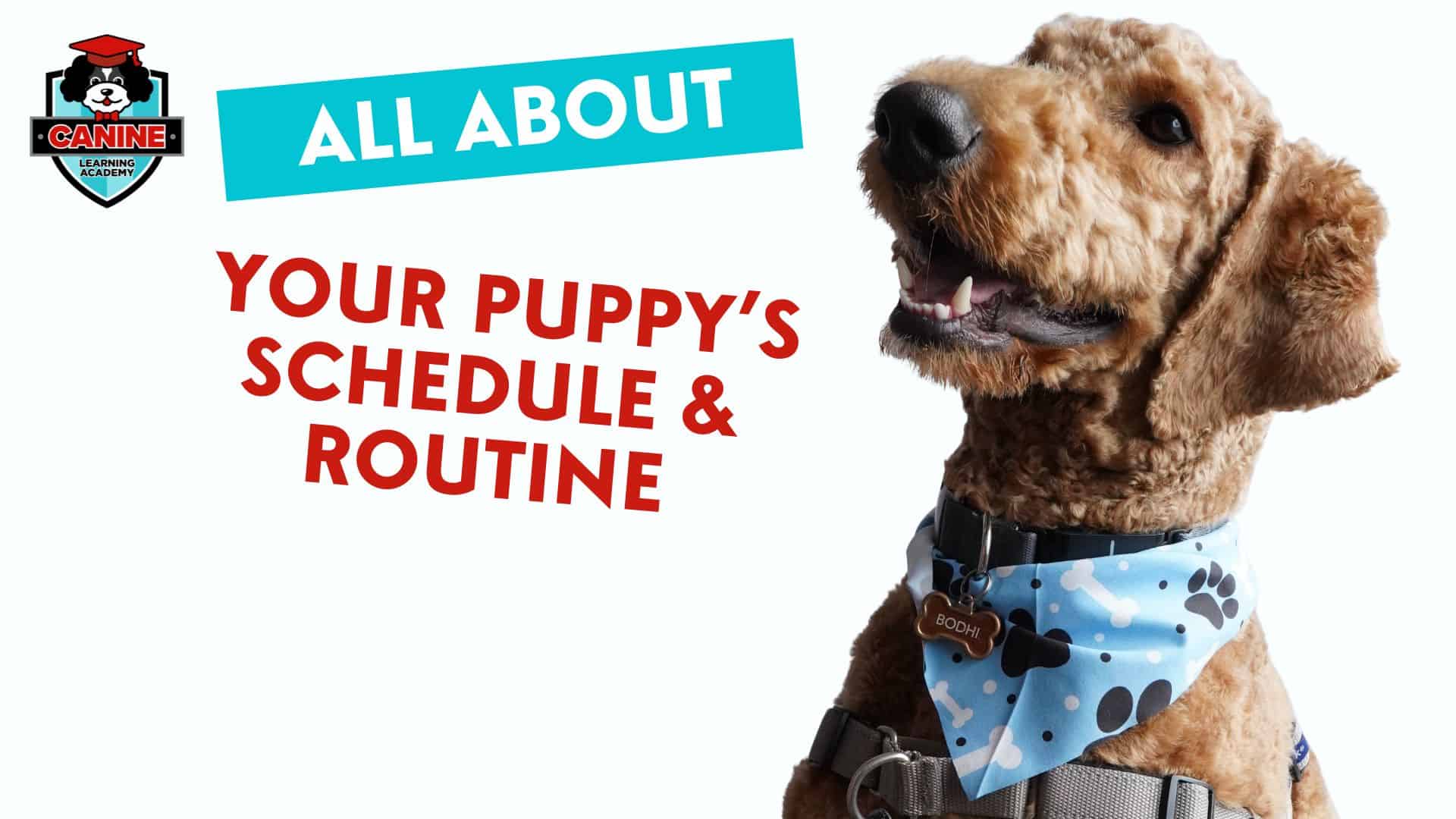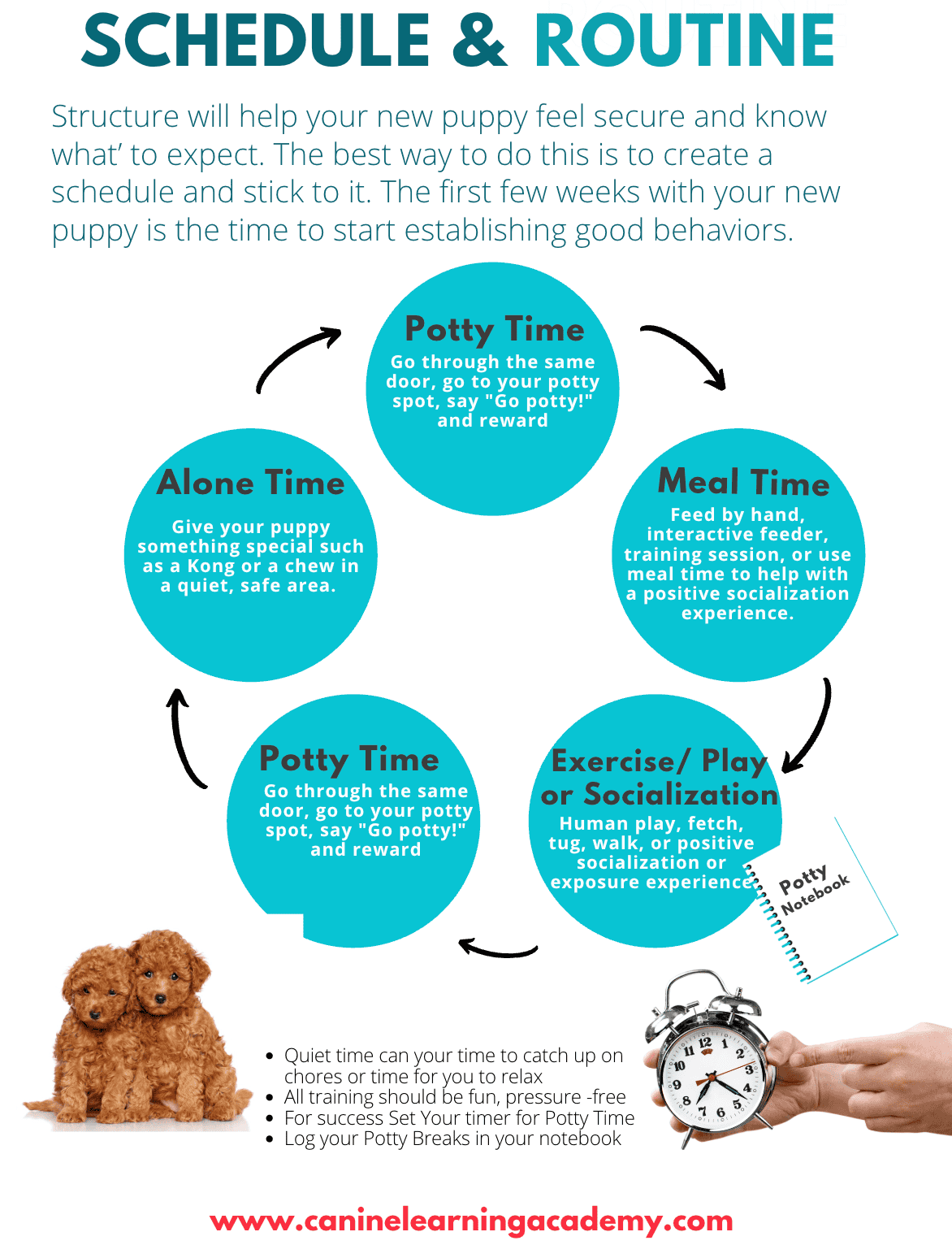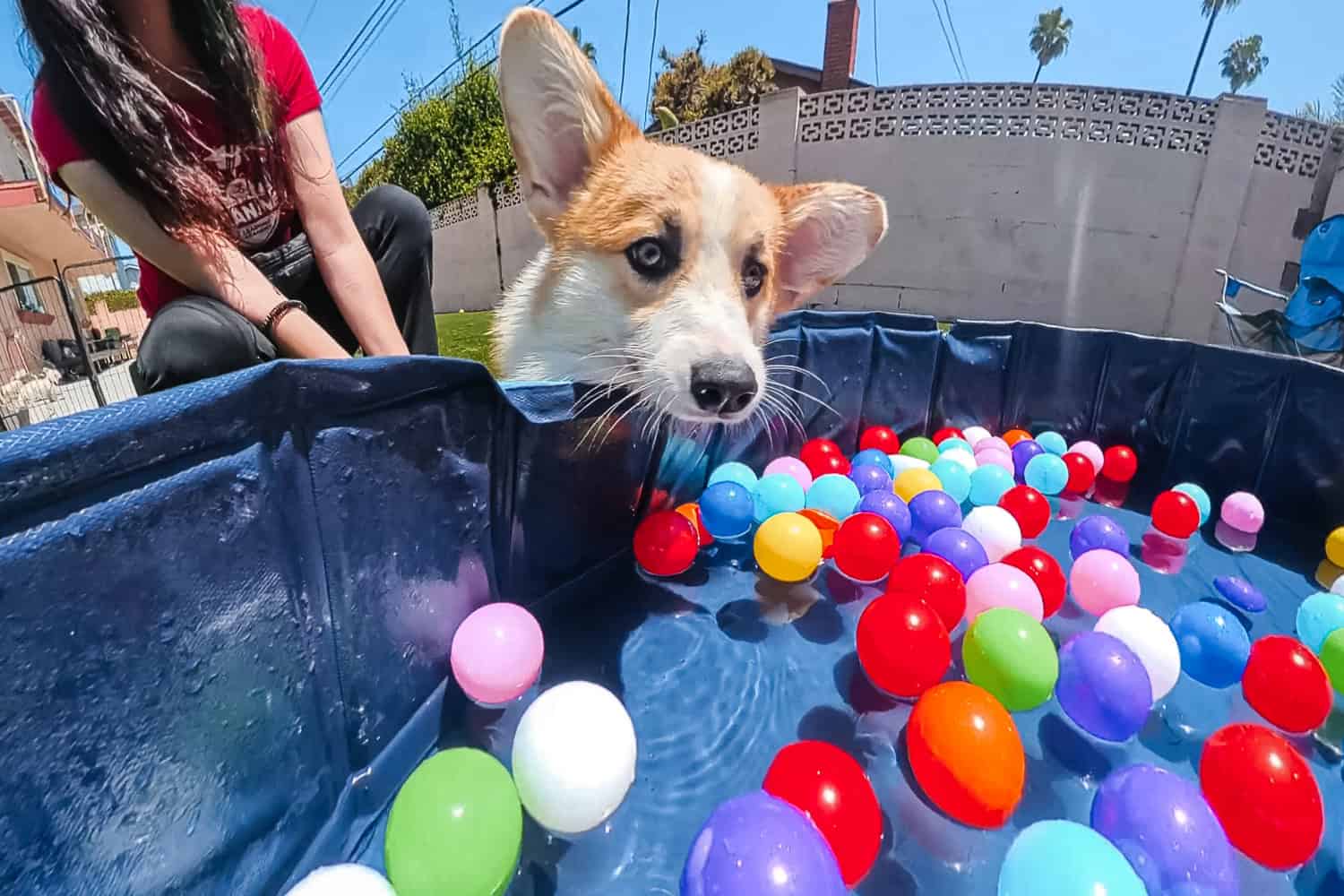How to Teach your Dog to Settle Calmly on a Magic Mat
Often puppies and dogs can get really excited when they go to new places or meet new people or dogs. This is why some dogs can find it difficult to be calm well mannered canine companions.
These outbursts can lead to your dog doing unwanted behaviors, such as barking, jumping up, pulling, and even not listening to you.
It’s possible to teach your dog how to relax and even settle anywhere and everywhere with a Magic Mat.
With your Magic Mat, you can take your dog out to cafes, a friend’s house, or anywhere in public and confidently know that they will lay down, chill and even fall asleep.
Your puppy or dog will learn to go to a mat or place you choose and settle in a relaxed down position. This looks like your dog laying down and rocking over onto their hip just like they would when they curl up on the sofa at home.
When your dog understands how to settle on their Magic Mat, they not only learn how to stay and chill in one place. They also learn to enjoy and even ask for it. Yes, even in busy places like shopping centers, parks, restaurants, or around other dogs.
What is Positive Reinforcement Training and why do we use it?
We use Positive reinforcement training. We use toy play, praise and/or treats to reward your dog while learning. Because the reward makes him more likely to repeat the behavior, positive reinforcement is one of your most powerful tools for shaping or changing a dog’s behavior.
Important information before you begin training
Read through each step first
Work through one section at a time
Only progress to the next stage when dog is confidently meeting the criteria of the step they are in
See notes to check criteria is met
Give your dog regular breaks
5-10 minutes is a good length of time for each training session
Have access to fresh drinking water
If your dog opts out and chooses to leave the training room/space or disengages from you, allow them time to rest and digest before continuing – or end your session and start again later.
When starting a new training session, revisit the previous step and reward the behaviors from where you were previously working. If your dog does not offer that behavior to the same criteria in the last training session, it’s ok to go back a step or 2 and reward earlier stages before progressing.
What you’ll need…
- A soft mat or blanket for your dog to lay on (Doggy Place Mat- https://amzn.to/3MRYNI8)
- Treats, chopped up nice and bite-size
- Treat Pouch or tub to hold your treats (Doggone is our favorite- https://amzn.to/3VLumaB)
- Marker word or Clicker (Our favorite clicker- https://amzn.to/3MRelf4)
- Your Dog (of course)
For a list of our favorites visit Staff Favorites
Useful Terms
Mark, or Marker Word – refers to the signal made to indicate to a dog that the thing they have done (behavior) was correct and a treat is coming.
Suggested markers: a Clicker, or verbal word such as ‘Yes’ or “good” or if you have a deaf dog you can use a hand signal like a thumbs up.
Youll want to use a short, sharp, clear sound, with the same tone of voice and pitch each time the dog hears it.
Clicker – A clicker is simply a small mechanical noisemaker that when you press a button makes a ‘click’ sound.
Dogs learn to associate the sound with something they have just done (a movement or behavior) and that a treat is coming.
Staff favorite – https://amzn.to/3MRelf4
Reset – indicates to toss or roll a treat away from the training area or object the break from the exercise and start the next repetition.
Cue- is the information to signal to the dog to do a particular behavior, a cue can be a word (verbal) or a movement or gesture (physical)
Release signal- indicates to your dog the end of a training session or end of a task/behavior, so that they can go and just be a dog.
For example, when asking a dog to do a still position, such as laying down, the dog learns to stay in the cue’d position until they hear a release word or see a release signal.
An example of a release word would be “all done’ “free” “Okay” “that’s it” or a hand gesture where you shake your hand like you are drying off wet hands.
Generalization – means that your dog can apply a concept to many situations; they know when you ask them to settle on mat they should settle on their mat whether they’re in the living room, the kitchen, by the front door, at a crowded cafe, or in a grassy park with children playing.
Fluency means the dog performs the desired behavior correctly, smoothly, and without hesitation.
Let’s break down the training for our puppies and dogs;
- Introduce the mat or blanket
- Getting on the mat
- Laying down
- Stay on your mat
- Adding the Cue
- Add in distractions to create reliable behavior anywhere
- Taking the mat training on the road
Step 1: Introducing the Mat
Giving the Mat its Power
When your dog is watching, lay a mat on the floor and sprinkle 5 treats onto the mat. Let your dog come over to check out the mat and enjoy the treats.
When the dog has eaten the treats, show the dog a treat from your hand to pick their nose up off the mat and roll the treat a short distance away to ‘reset’.
Whilst the dog is away eating the treat you’ve thrown, reload another round of 5 treats onto the mat.
Repeat this a few times before moving on
After the dog has had a few visits to investigate the mat and enjoy the treats available, reset the dog again by throwing a treat away from the mat.
This time whilst dog is away chasing the treat, do not reload the mat
As your dog returns and moves towards the mat, to investigate and see if more treats are available, Mark ‘Yes’ (or click) and sprinkle 2 or 3 treats on the mat.
Reset by throwing a treat away
Repeat a couple more times – Mark ‘Yes’ as the dog returns towards an empty mat, and reward by placing 2 or 3 treats on the mat.
After a few repetitions, end your first session by throwing a treat for the dog and picking up the mat.
Criteria – Dog is moving back towards the mat and looking or sniffing the mat even when there isn’t food immediately available on the mat.
Test – Does the dog understand that the mat is an interesting place to check out?
Next time you go to lay the mat down on the floor, without treats available, does the dog go to check out the mat again?
We are teaching the dog that the mat is a cool and interesting place to be – a place where good things (treats) happen.
Progression:
If you lay the mat down, without treats and the dog goes in to investigate, you are ready for the next step.
If the dog is not showing interest, continue another round of Step 1.
Step 2: Getting on the Mat
Happily walking over to the mat
Now that your dog is interacting with the mat, we can teach the dog to put themselves on it.
Start by placing the mat on the floor and when your dog moves towards the mat, mark ‘Yes’ and reward by sprinkling a couple treats on the mat.
Reset the dog and pick up the mat.
Repeat this step 2 or 3 times to remind the dog that the mat = food is coming, good things happen here. This is what gives the mat magical powers. For the dog it’s a magical treat dispenser that is associated with everything good and for pet parents it’s magical because it’s a magnet for your dog.
Reset.
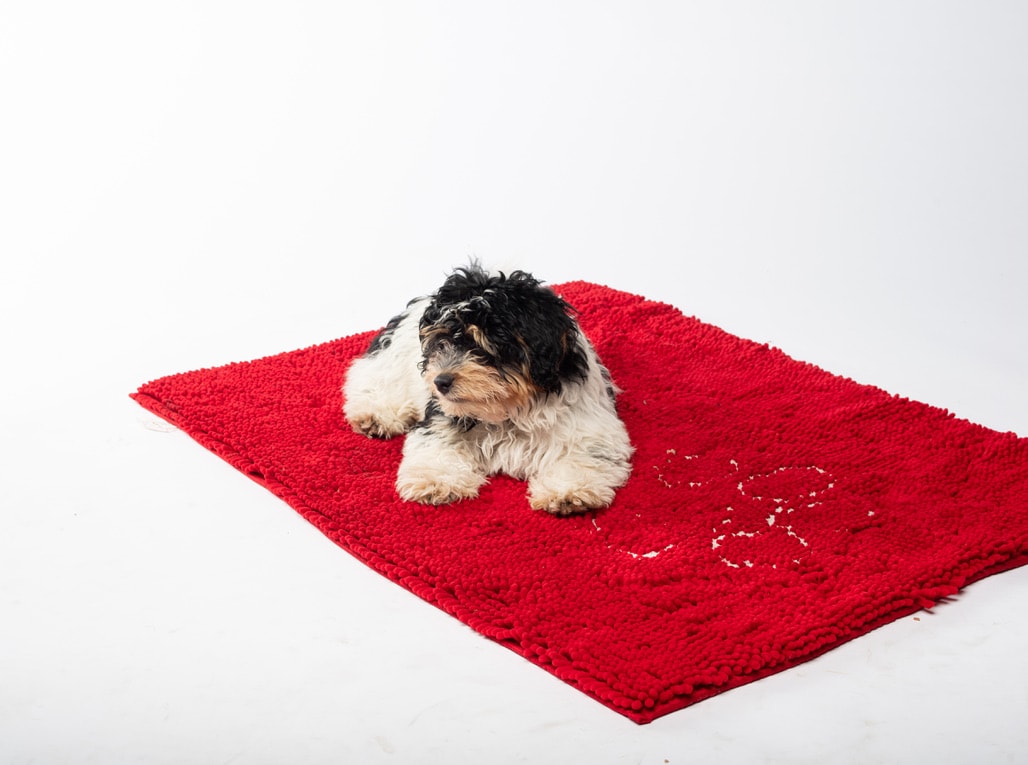
Criteria for Step 2 Getting on the mat- Mark or click for movement towards the mat
Reward by placing food on the mat
Reset.
Does the dog continue to move back towards the mat after each reset?
Yes? Move on to Step 3.
Step 3: Lay down on the Mat and Stay
Criteria – Go to the mat and lay down
Lay the mat on the floor, look at the mat and wait for the dog to come over and place 4 paws on, as per the previous step.
Make sure that you are near the mat, and ready to mark and treat.
When the dog comes over to the mat and places all paws on, your next step is to wait, keep still and see what your dog does next.
Some dogs at this point will look to you and sometimes offer a ‘sit’ without being asked. This is because we frequently ask our dogs to sit for treats so they naturally come to do it by default.
If the dog naturally offers a sit on the mat, mark ‘Yes’ and reward your dog by placing treats on the mat.
Reset.
Next time your dog comes over and sits again (because it worked to get treats last time), progress to getting your dog to lay down on the mat.
For dogs that are used to shaping games, you can wait and see if they naturally offer and put themselves in the down position.
If the dog does not put themselves into a down, use your hand that contains the food to lure them into a down position.
When they’re in a down mark and reward them by placing food on the mat.
Reset
Aim for 3 or 4 repetitions where the dog comes over to the mat and lays down. If they don’t go into the down but are stuck in a stand or sit, ask them to lay down if they know it or continue to lure them.
Mark when they are in a down and reward by placing treats on the mat.
Reset
Aim for another 3 or 4 repetitions before ending the session and picking up your mat.
Progression – Once your dog is coming over to the mat and laying down without being lured or cue’d, we want to encourage them to be in a relaxed down position so that when they’re hanging out on the mat for a longer length of time they’re going to be comfortable..
Next session and new Criteria –
Place mat on the ground, dog goes to mat and lays in a relaxed down position.
Once your dog is competent in going to the mat and into a down we are looking for them to be in a relaxed down position where they are rocked over onto one hip.
To encourage them onto one hip, ask or lure your dog into a down position and with food in your hand encourage their nose towards their back leg or hip.
Wait for their body to rock over onto the hip and reward by placing food on the mat.
Reset – roll a treat off the mat so dog leaves the mat.
Aim for about 5 repetitions where the dog comes over to the mat, lays down and rocks over onto one hip. Reward by placing treats on the mat.
Reset.
Criteria – Dog comes over to the mat and lays down, rocked over onto one hip
After you’ve completed 5 successful repetitions, finish your session and pick up the mat.
It’s important to not rush this stage and give the dog lots of opportunities to come over and lay down, making sure to place the treats on the mat, to the side of the dog as this is a valuable place to be and encourages that relaxed down position.
*Troubleshoot – some dogs may prefer one hip to the other, and older dogs may struggle with the position if they’re a bit stiff or sore. Know your dog and what they find comfiest.
Progression – when your dog has had at least ten successful repetitions of coming over to the mat and laying down in the relaxed down position, move onto Step 4.
Step 4: Stay on the Mat
Criteria – Dog comes over to the mat, lay down and stay there
To get the dog to stay in their down position, you need to have a handful of treats ready.
First step – Dog comes over to the mat and lays down, mark ‘Yes’ for the down and this time feed 3 treats one after the other and count out the words 1, 2, 3 with each treat.
Reset.
Repeat this step, and each time the dog comes into the down, you’re going to gradually extend the length of time between each number so that the dog stays in the down position for longer and comes to expect with the sound of the numbers mean that another treat is coming and it’s worthwhile staying in place.
Reset.
Repeat above steps until your dog is comfortable staying in place on the mat and you are able to extend the time up to 30 seconds.
End session and pick up your mat.
Don’t rush through this step, it’s important that our dogs learn to stay in place as we build up the duration.
Initially start for a few seconds, gradually build up to 30 seconds, then to 1 minute.
Over time you won’t need to count out your 3 treats as the dog learns to stay in place.
*Troubleshooting – If at any point the dog breaks away before the 3rd treat is delivered go back a step by decreasing the time and making it easier for the dog to stay in place.
Over your next few training sessions you’ll gradually build up this time, perhaps up to 5 minutes, 10, 15, 20 etc.
As you’re building up the length of time, remember to regularly reset the dog. At this point you might want to add in a release word when you reset, such as ‘OK’ to let the dog know that they can now finish laying on the mat, get up, move around and a treat is going to be delivered away from the mat.
If you no longer need your dog to be on the mat, while training it can be useful to pick up the mat so that the mat doesn’t lose any of its super powers.
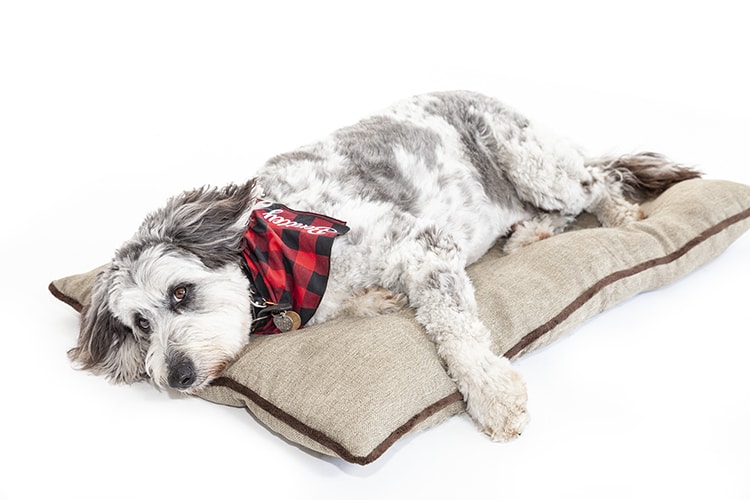
Top Tip
Once your dog is comfortable coming over and staying for a minute or longer, this is an easy exercise to train whilst you’re doing other activities, like sitting watching tv. You can have your mat next to you and some treats to reward the dog for staying in the down position by varying the length of time between treat drops.
Step 5: Adding the Settle Cue
From old cue to new cue
Once your dog understands that the mat is placed on the floor, they go over to the mat and lay down in a relaxed position, you can add in your cue.
This means adding a signal to the beginning of the activity, to instruct the dog to go over to the mat.
We often use a word such as ‘Settle’ or “Go chill”
To us it means, go lay down and relax. Over time you’ll be able to instruct your dog to ‘settle’ on any mat anywhere.
At the start of training the visual of the mat being placed on the floor starts the dog to do the behavior – that’s the existing ‘cue’.
To add in your new cue, you’ll add in your new cue (ex. “Settle”) at the same time you put the mat down.
Say the word ‘Settle’, place mat on the floor, dog goes over and lays down. Mark ‘Yes’ as the dog lays down and reward the down by placing treats on the mat.
Repeat this by resetting the dog by saying your reset word ‘OK’ throwing a treat and this time without lifting up the mat.
As the dog comes back towards you, say your new cue word ‘Settle’, and look at your mat, wait for your dog to come over, lay down in the relaxed down position. Mark ‘Yes’, feed by placing treats on the mat.
Reset and repeat ten times.
Criteria: Listen to the cue word, look for the mat, lay down and be in a relaxed position until given release or reset word ‘OK’.
Top Tip – You might want to offer your dog a long lasting kong or chew to enjoy on their mat after you cue settle as this is a great way to build up the length of time that they stay on the mat.
Top Tip 2 – Look for relaxation.
Over time your dog will stay on the mat for longer and longer, and you’ll notice that they will start to relax. This might be that they stay in position but are not staring directly at you, their face may soften, they might put their chin down or roll fully onto one side, this is perfect! Reward the dog for chilling out by slowly dropping treats for them onto the mat. Slow movements are less exciting and more likely to help the dog stay calm.
Step 6: Add Distractions to create a Reliable Settle Anywhere
Distractions come in many different shapes, don’t skip this step!
Progression – Now the dog is understanding that they come over to the mat and lay down, we can increase the difficulty of the task before it’s ready for use when out and about.
To do this we are going to add in distractions – starting with you as the distraction so that we can get some positive practice before we up the distrations.
The criteria now is for the dog to lay down and stay on the mat in a relaxed position for at least 30 seconds. We are gradually building up the duration of how long they stay, and that they will be in position on the mat no matter what is going on elsewhere.
To start, cue ‘Settle’ and lay mat on the floor.
Dog comes over and lays down.
Before delivering a treat, you are going to start by moving your body. After each movement, mark ‘Yes’ and deliver treats to the dog by placing them on the mat.
Do one movement at a time so that your dog can take it in slowly without setting them off.
After each movement, return and reward the dog, try out 2 or 3 movements initially and then reset.
Overtime you can increase the number of repetitions.
Suggested movements for YOU to do (not the dog):
- Move from sitting next to your dog to kneel
- Move from sit to stand
- Stand up and turn to the right
- Stand up and turn to the left
- Stand up and turn in a circle
- Stand up and turn to face away and return
- Stand up and take a step back
- Stand up and take two steps back
- Stand up and jump
- Stand up and do 2 star jumps
After each movement, remember to go back and reward your dog by placing food on the mat so that they understand that staying put pays off.
After several movements reset the dog by saying ‘OK’ and throwing a treat away from the mat so that you can do another round of settle with distrations.
*Troubleshoot 1. If your dog gets up when you start to move, ask your dog to lay back on their mat and make your movement easier, this could be by reducing the amount of movement. For some dogs this could be as simple as moving your arm first before moving from sit to kneel for example.
*Troubleshoot 2. If your dog gets up after you’ve fed them or marked ‘Yes’, go back to the mat, ask them to lay down and reward them by placing food on the mat. We want to make sure the dog knows that it’s worthwhile staying in position on the mat.
Progression – Increase the challenge
If your dog is successfully staying on the mat whilst you jump or dance around, it’s time to make the distractions harder.
This might look like moving further away from the dog and continuing with the above suggested movements.
Alternative ways to increase the challenge is to use food or toys.
Start by cueing the dog to ‘Settle’.
Once the dog is on the mat, in a relaxed down, start by placing a treat on the floor near by, close enough to be tempting to the dog but within your reach so that if the dog gets up you can grab it before the dog does.
If the dog stays in place, pick up the treat and reward the dog by placing it on the mat for them to eat.
To increase the difficulty, you could try;
- Dropping the treats
- Dropping multiple treats
- Gently throwing the treats a short distance
- Tossing a toy in the air
- Placing a toy near by
- Bouncing a ball
- Rolling a ball
Each time the dog is successful and stays in place, reward them by feeding in position.
Other distractions you can use when training at home might include;
- Having another person walk into the room
- Have the person walk around the room (but not be too exciting to entice them off the mat)
- Have someone knock on the door
- Take a phone call and walk around the room
As the distractions get harder its important to increase the amount of times you drop treats for your dog so that they are successful in staying on the mat.
The harder the distraction = more treat drops for the dog
Keep the distraction sessions short initially, remember we want our dogs to get loads of wins here for getting it right!
*Troubleshoot – if your dog breaks and gets up and leaves the mat, pick up the mat and reset your session.
When the dog is ready to re-engage with you, place mat down and start again with an easier level of distraction and reward heavily even if they’re already successful at that step, remember lots and lots of wins teaches the dog to stay in place no matter what else is going on around them.
Criteria – Dog stays in down position on the mat, no matter what is going on around you
Start this at home in an easy location
Progress – Take it outside to your yard or garden
Understand- For many people, a well-trained dog is one who knows how to perform a variety of behaviors. However, there are many dogs who can do a whole list of behaviors and even show off a few fun tricks at home – but who go shy when asked to perform the same behaviors in another room of the house or while visiting relatives or friends are watching.
Have you wondered why your dog fails to respond correctly when working in a new environment?
The reason is your dog has not yet generalized the behavior to all contexts, and lacks fluency.
In dog training, generalization means that your dog can apply a concept to many situations; they know when you ask them to settle on mat they should settle on their mat whether they’re in the living room, the kitchen, by the front door, at a crowded cafe, or in a grassy park with children playing. Fluency means the dog performs the desired behavior correctly, smoothly, and without hesitation.
When we train a behavior, we often make the mistake of assuming that the dog will perform the behavior anywhere, anytime, so long as the correct cue is given. But it’s important to understand a dog’s lack of compliance when you given them a cue, usually means they don’t know the behavior to the extent you believe they do.
That’s a training problem; the behavior wasn’t generalized and taught to fluency.
Settle on a Mat in the Kitchen
To practice your settle on a mat in a variety of places in your home with different distractions before moving your training to the outdoors.
When you progress to new places, go back to simple distractions and make it really easy for the dog initially before increasing the challenge. New environments naturally present new distractions and increase the difficulty.
Step 7: Taking The Magic Mat Training on the Road
This is when the dream becomes a reality
Congratulations! You and your dog have your very own Magic Mat!
Now that your dog has been having loads of success in training in and around your home, it’s time to take the training out into the real world.
Now the Criteria is – Lay on your mat, no matter what and stay there until instructed otherwise.
To take your training out into busier environments make sure you have plenty of treats ready and before you start a session, engage with your dog. This might be giving them a few free treats, it might be playing a game or enjoying some affection – whatever your dog enjoys the most, we want them to be really tuned into you before you start.
It can also be really helpful to make sure your dog has had a walk to check out the new location and expend a little energy, potty break and a drink before you start.
Choose your location.
If your dog is very alert and aware of their surroundings, make sure it’s somewhere fairly familiar to them, and give them time to sniff and check out the environment before you start.
If your dog struggles to engage with you, don’t force them too, instead choose an easier location and train a different day.
Arrive in your training place and place mat on the ground and cue ‘Settle’.
If you’ve covered all the previous steps thoroughly and your dog is engaged its likely they’ll go ahead and pop themselves into the down position and you can reward them.
However, if they don’t it’s ok and normal – remember this is getting challenging now that they’re in a new place.
Instead start your training as you did at the very beginning in Step 1, place treats on the mat. They will quickly remember the game and you’ll be able to progress through the steps.
Keep your sessions initially very short.
New criteria is to listen for your cue, look for the mat, go over and lay down on it.
Reward with 5 treats sprinkled on the mat and reset.
Top Tip – If you’re in a public place keep your dog on a long line so they can move freely and still be safe. You may want to stand on the end of the long line so you have your hands free for treats.
When your dog is confident at coming over and being on the mat in the new location, you can build up the length of time between treats (as in Step 3).
Reset and repeat.
Once you’ve finished a training session, release the dog with your word that indicates they can now go do dog stuff, pick up your mat and go for a walk together.
It’s important to take your dog and the mat to loads of different places and build up the difficulty.
For example, taking your dog to a cafe with lots of people around, servers coming to take your order will be really distracting. Make sure to get loads of rewards in and help your dog to stay on the mat. This may mean that you don’t look up at your server because your focus is on your dog – thats ok, it will only be for the first one or two sessions until your dog knows that they just hang out on the mat, no big deal.
Top Tip – if you’re in a busy location, place your dogs mat in an easier and safe location away from the people traffic walking by. This will help your dog be successful.
Remember to increase the amount of rewards you give your dog every time you go somewhere new.
Challenging location = more treats
End Criteria – Lay down on your mat and stay there until released to do dog stuff
Conclusion
Now your dog understands that they have a Magic Mat, they will magnetically move towards it every time you get it out. It gives you the freedom to take your dog everywhere, knowing that they will be a calm, confident and well behaved companion.
All dogs will learn at different speeds, some will naturally fly through the training and be confident in loads of new places very quickly. Where others may take a little longer to remember the training particularly in when you’re out and about.
Go at the pace of your own dog and if they struggle it’s ok to go back a step and make it easier for them.
I take our mat with us everywhere we go. I just lay the mat down and she runs and lays down on it. Its been a wonderful to be able to take her on our road trips, she is such a good girl.
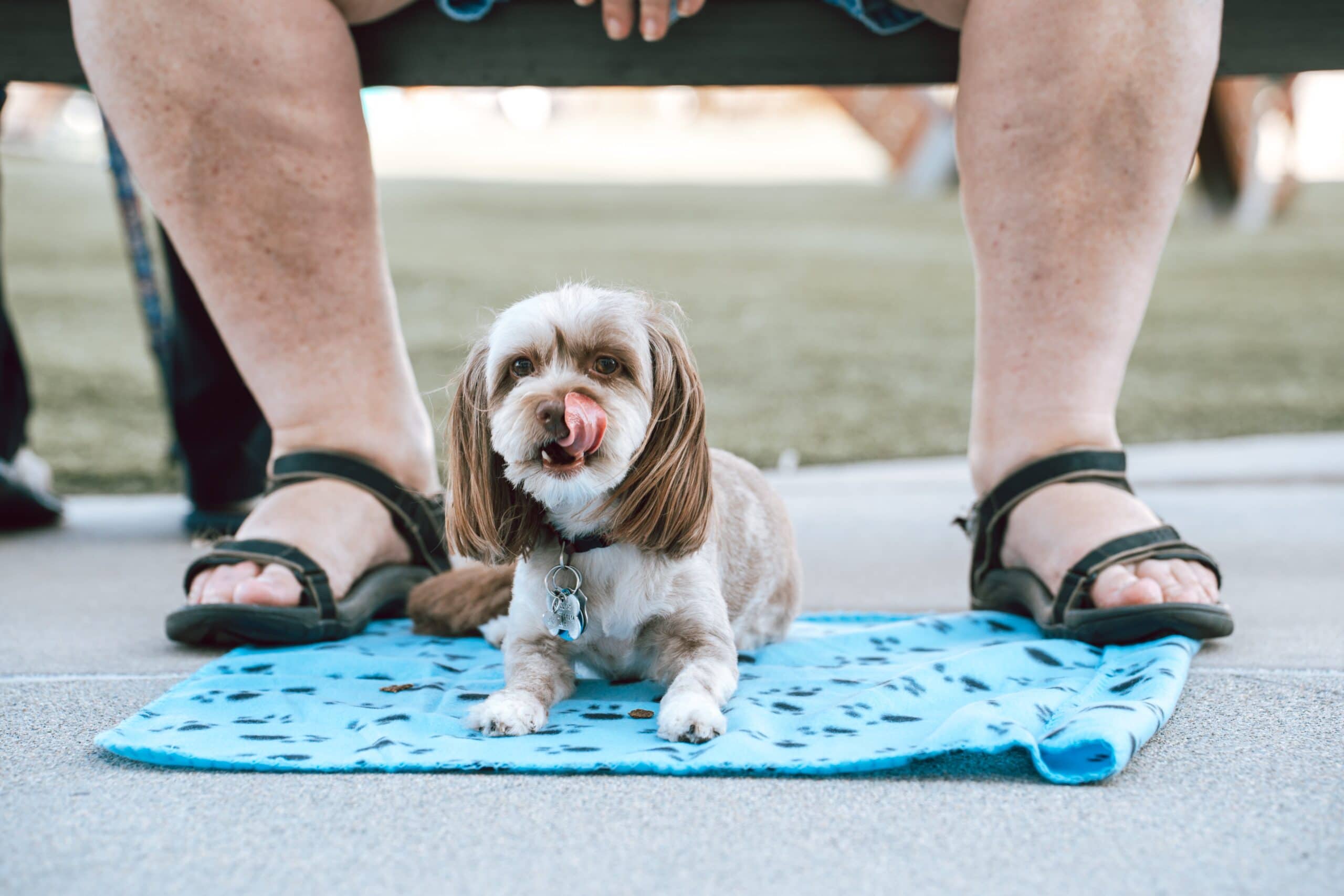
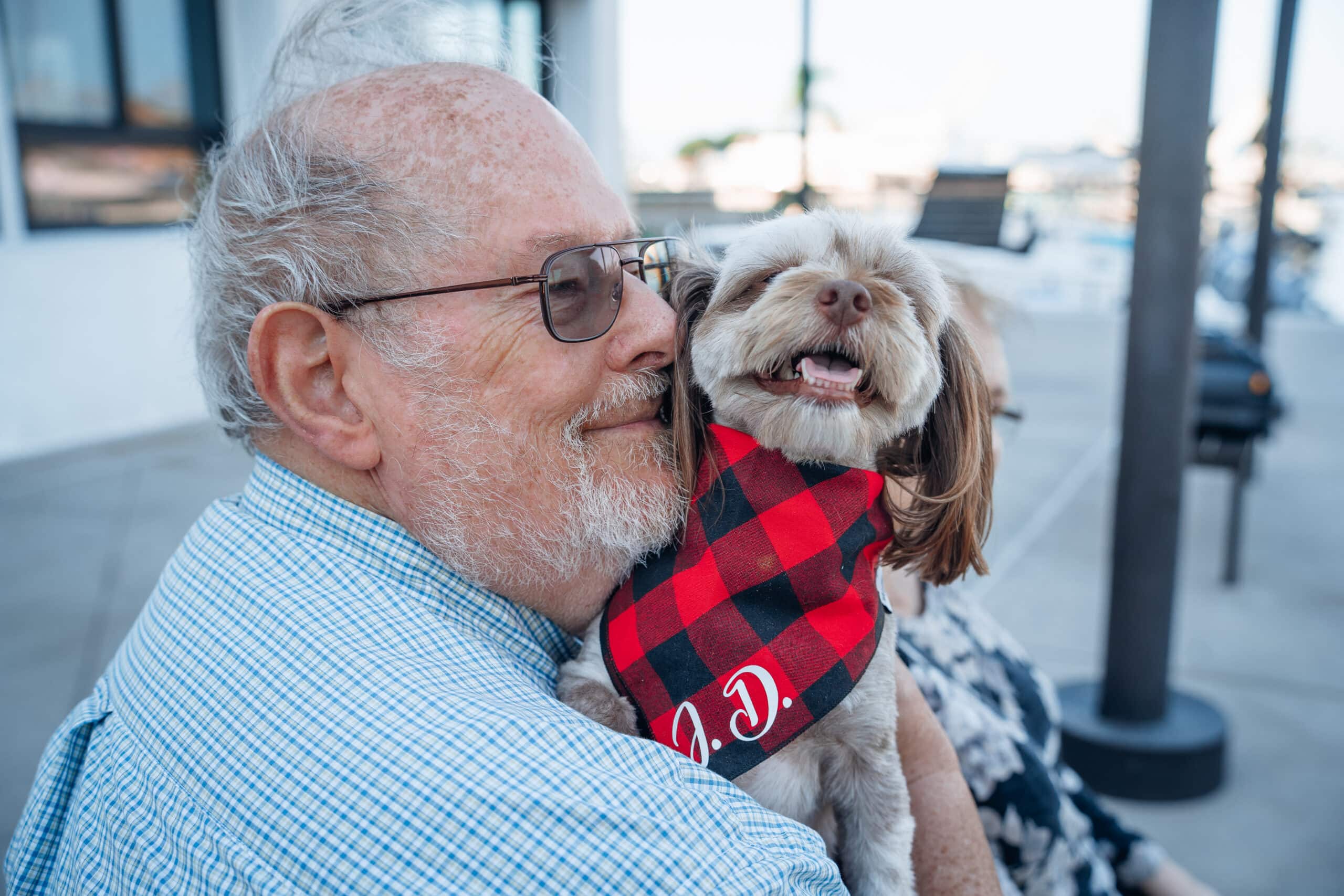
Join our Facebook Group
Want more tips or having trouble with teaching settle?
Join our free Tips & Advice Facebook Group for Pet Parents and get support from a Canine Learning Academy Certified Dog Trainer
Want to chat with Yo or Julie? Book a Free Call
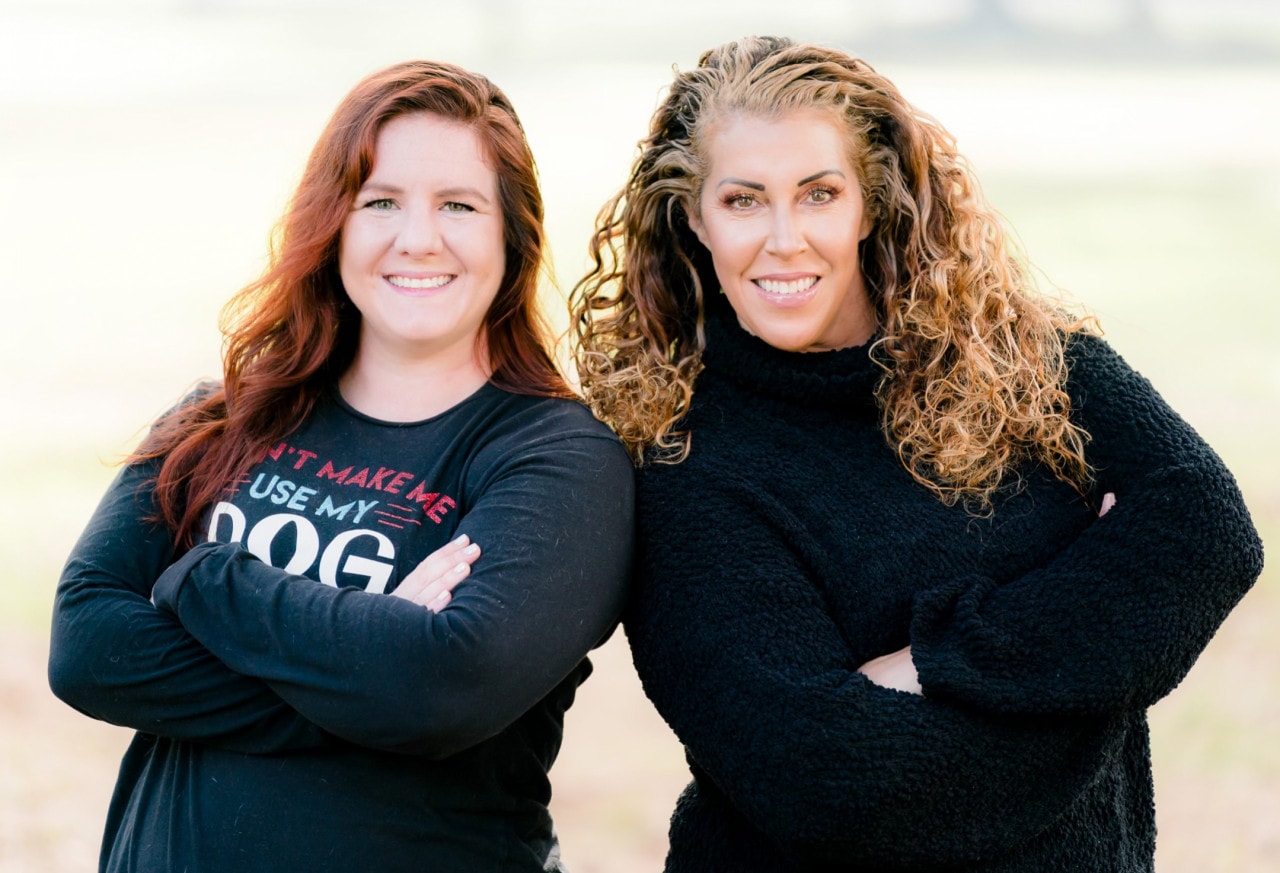
Book a free call with Canine Learning Academy’s Certified Dog Trainers Julie Fryman or Yo Armendariz.
This is a free call to find out what your goals are with your dog and what’s getting in the way.
Service time is between 15-30 mins.

